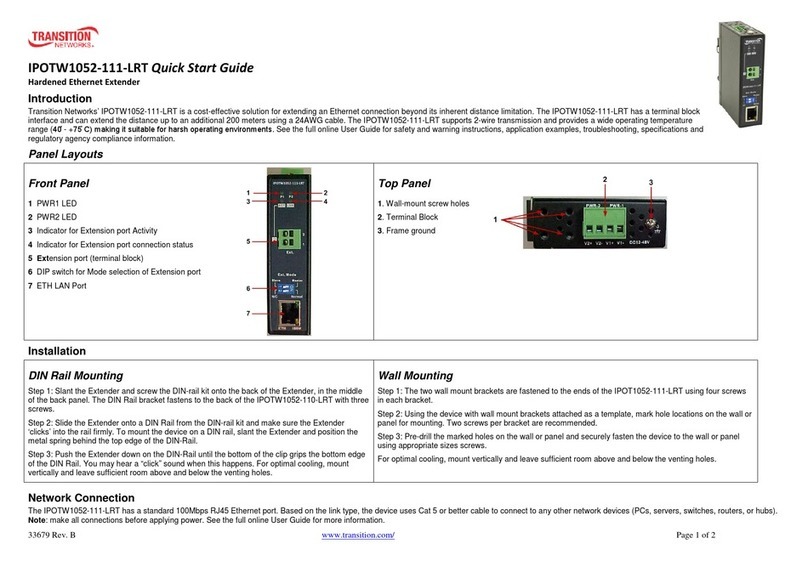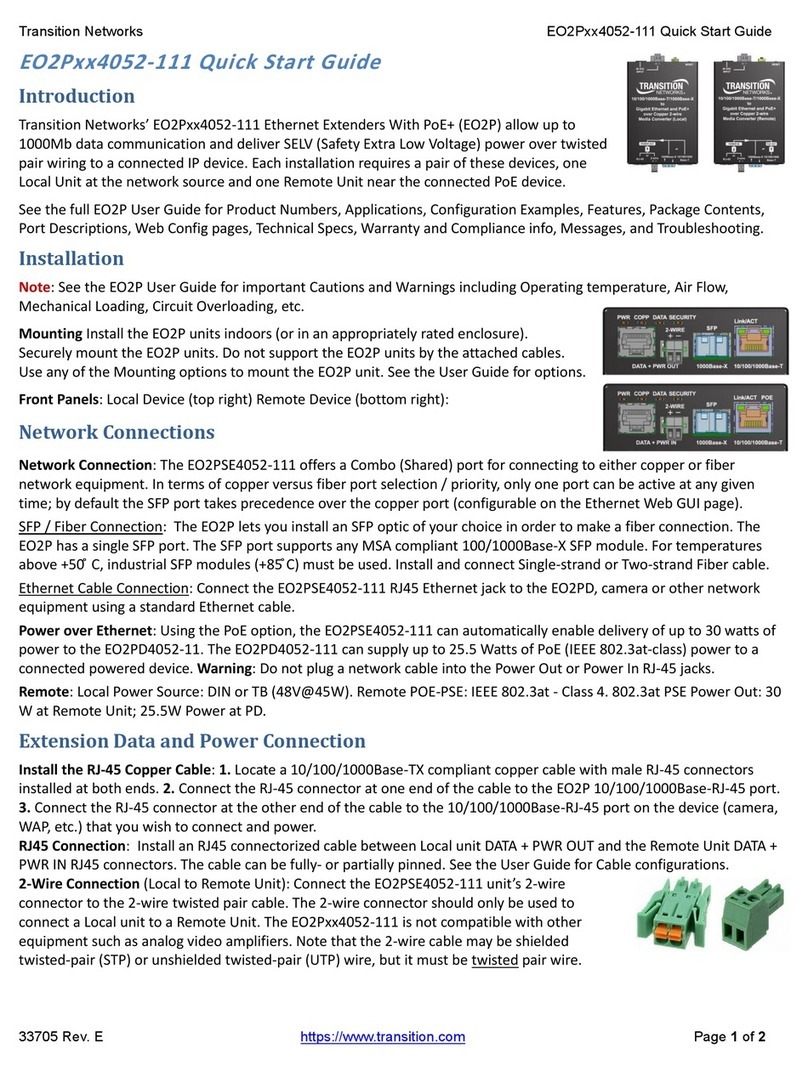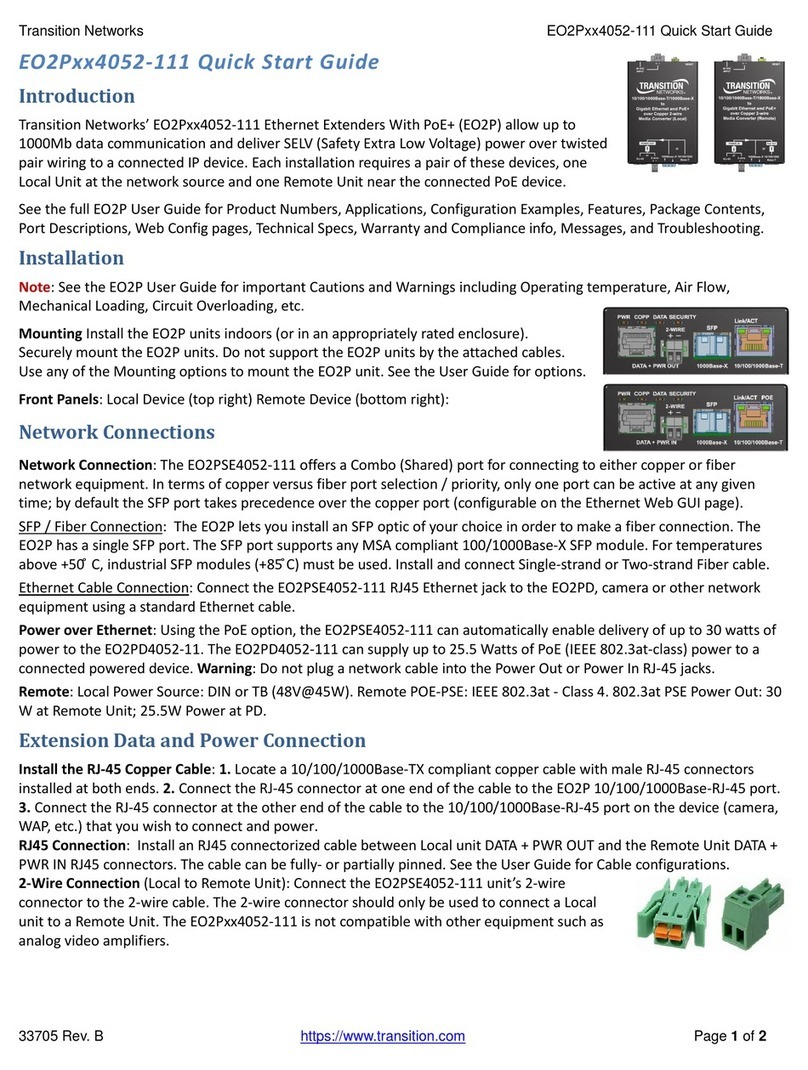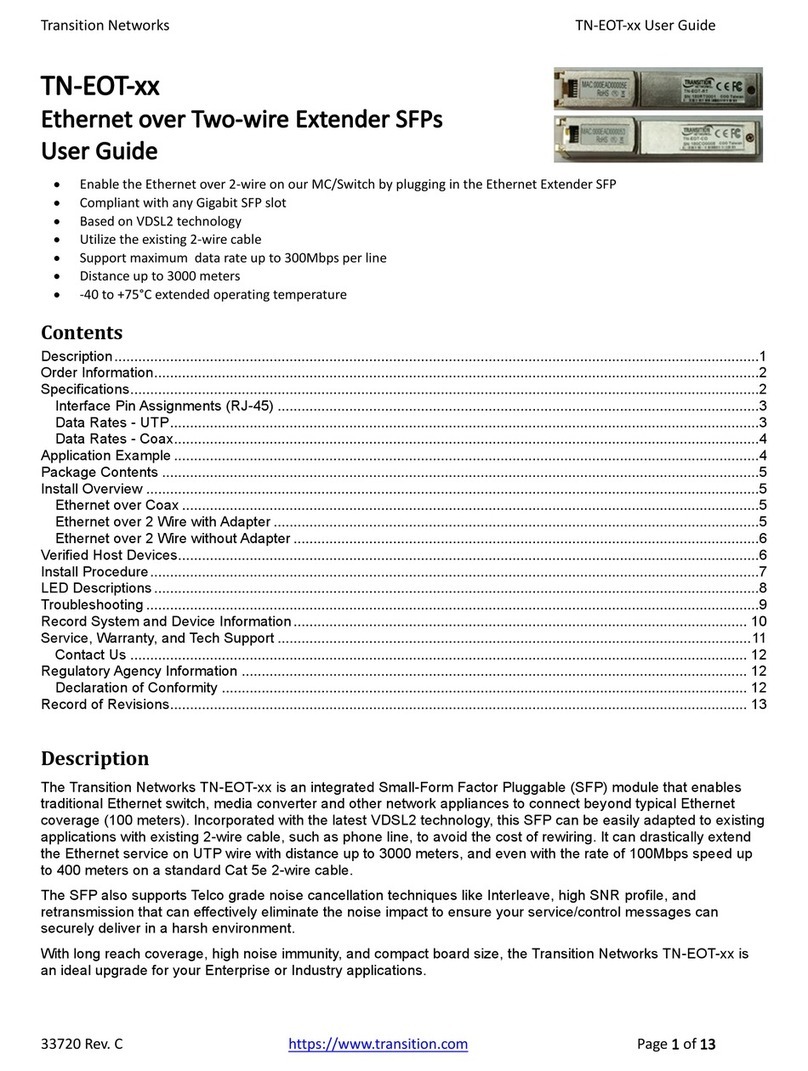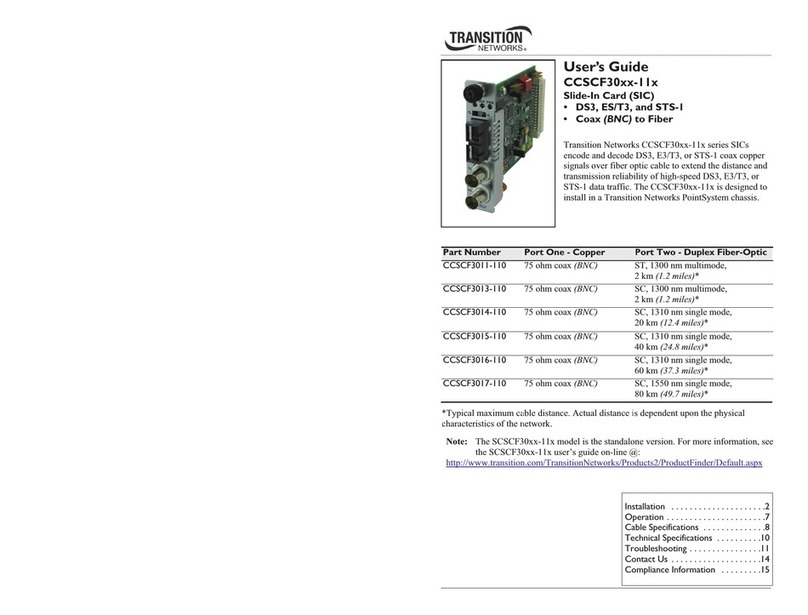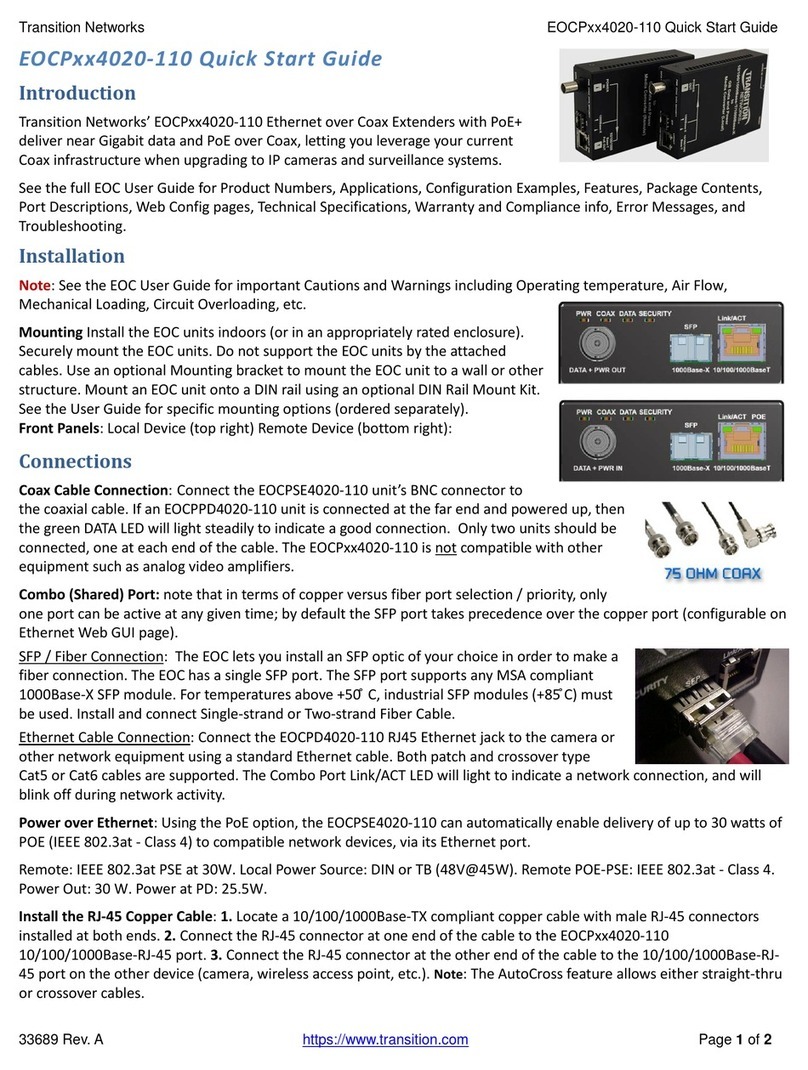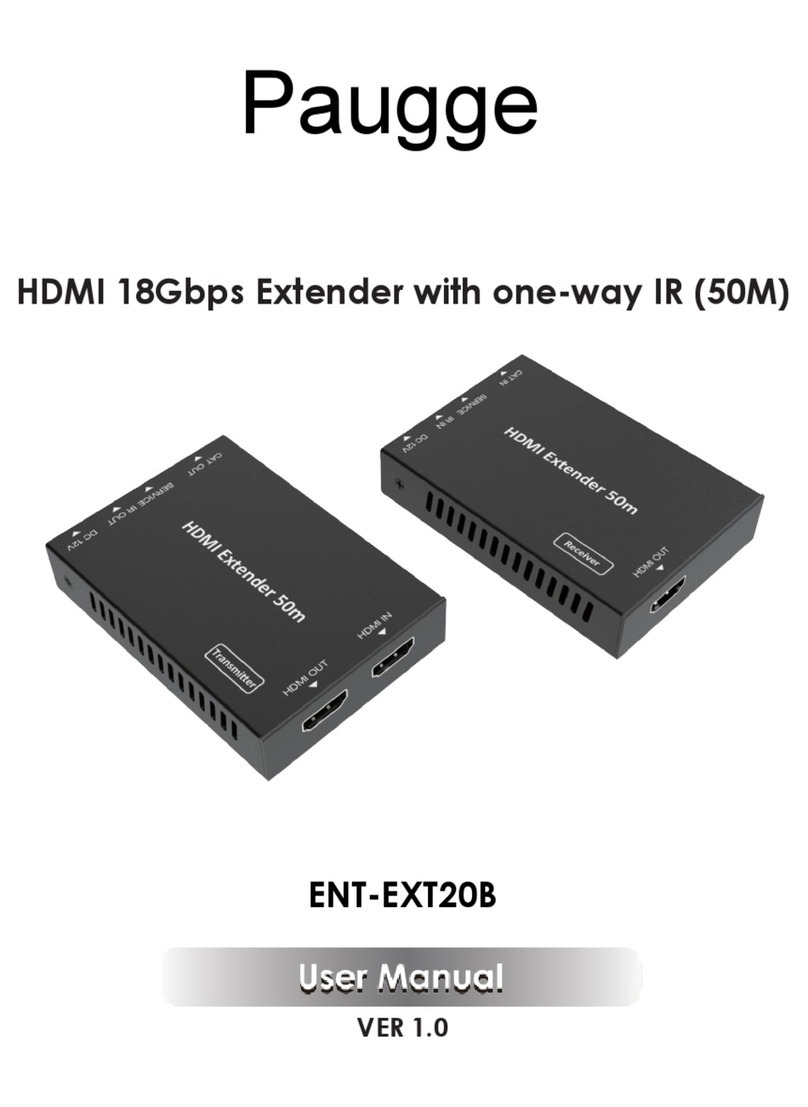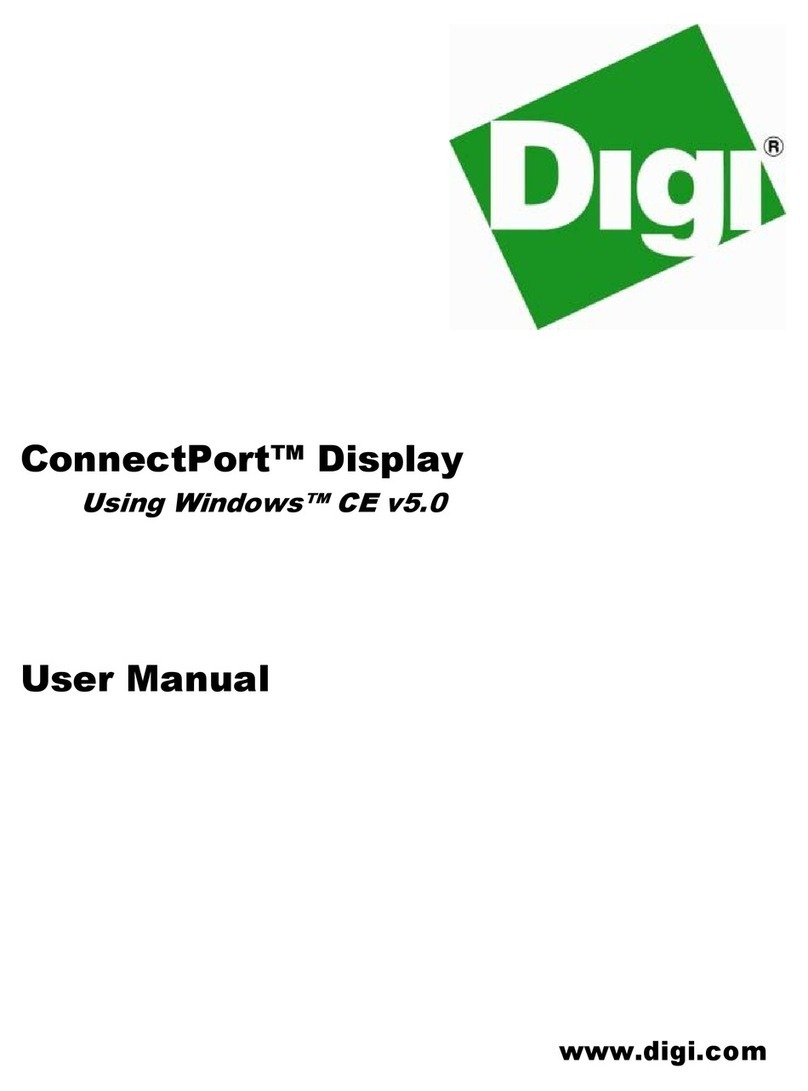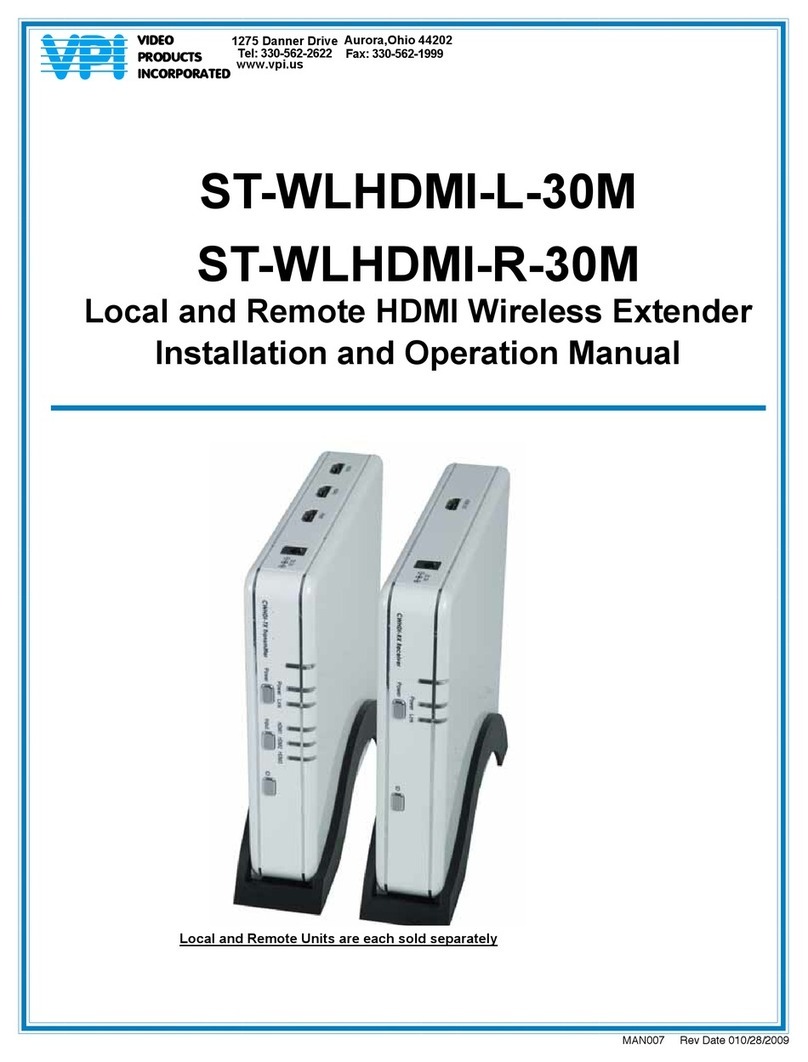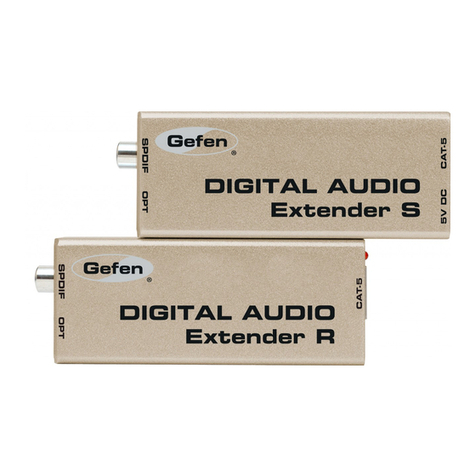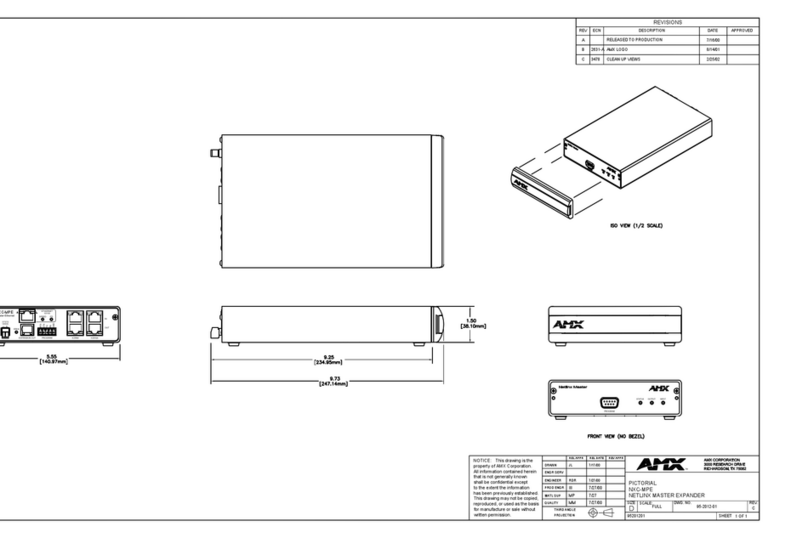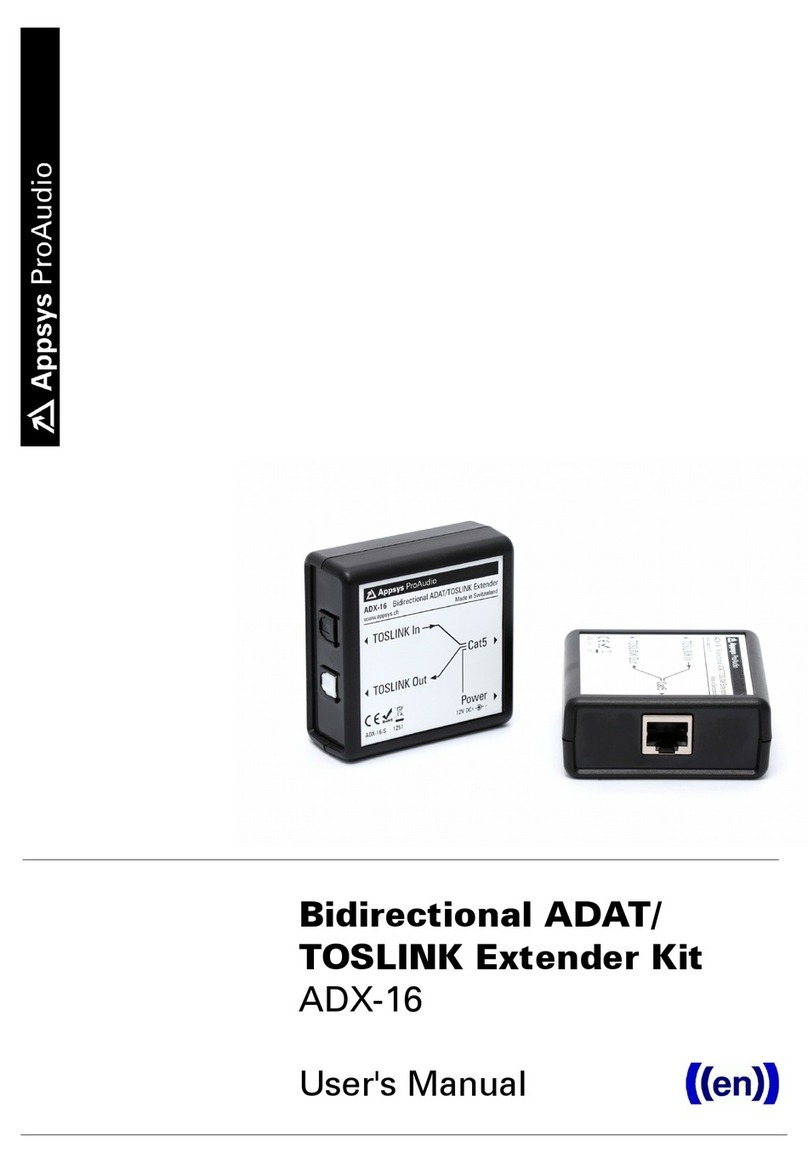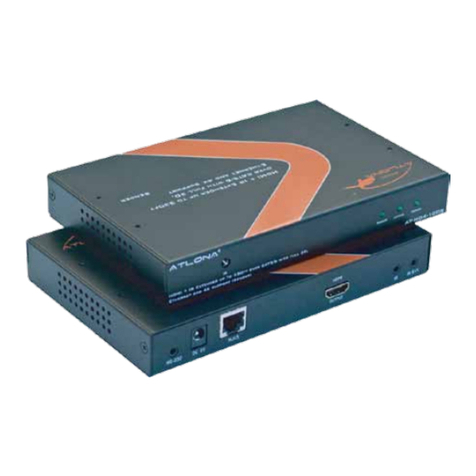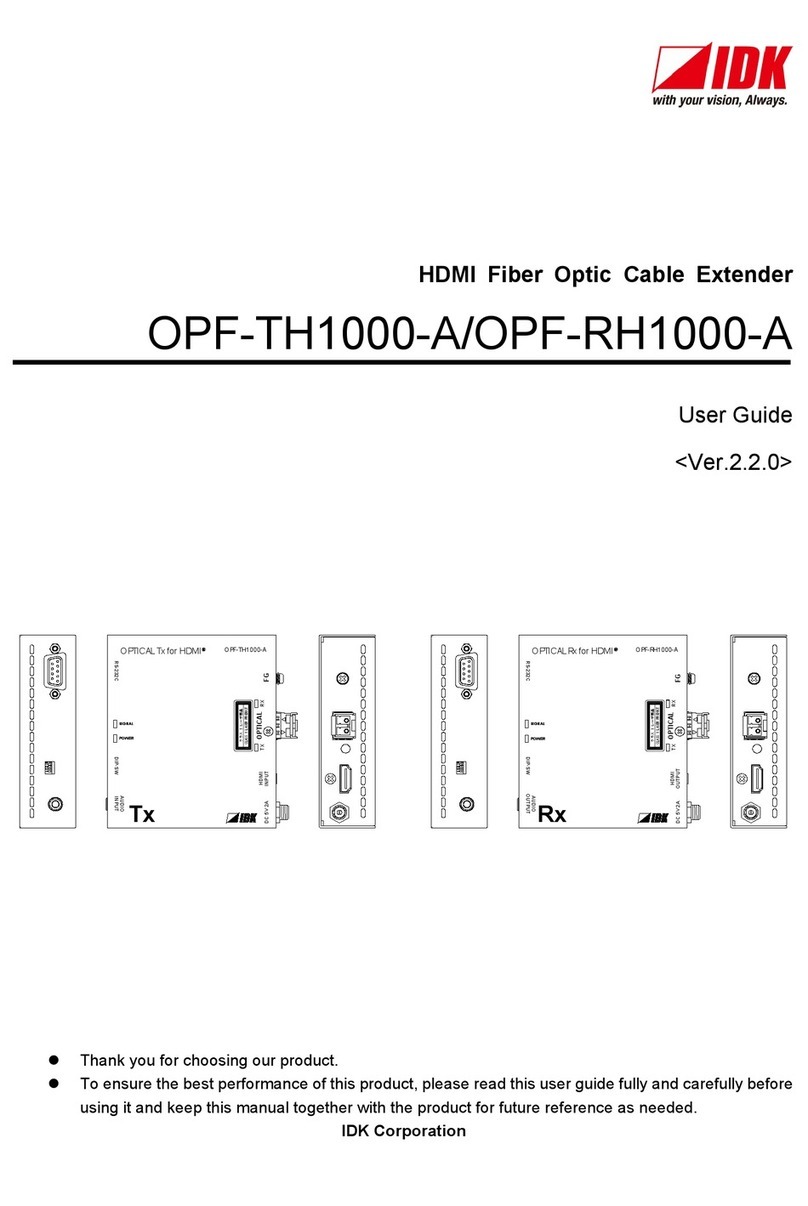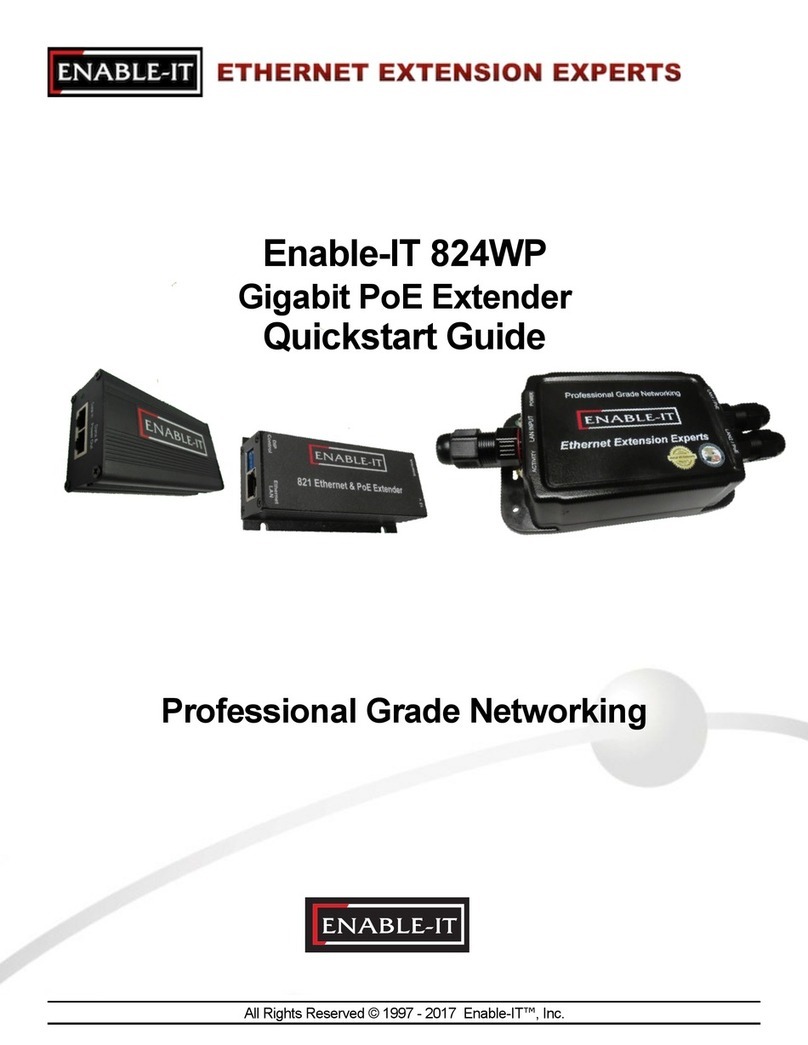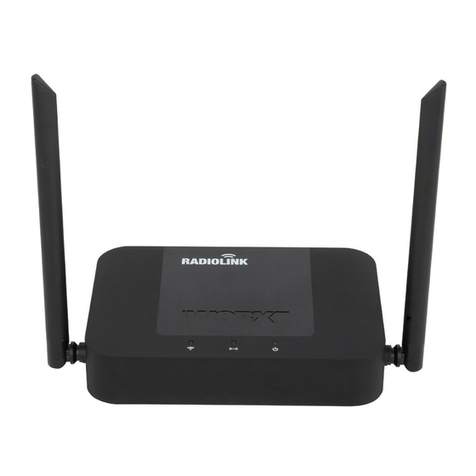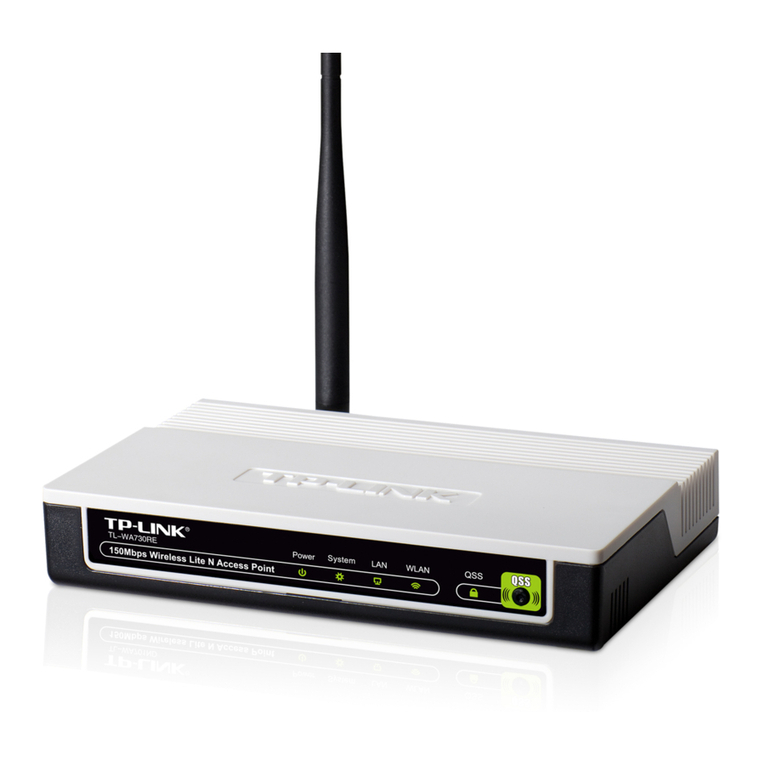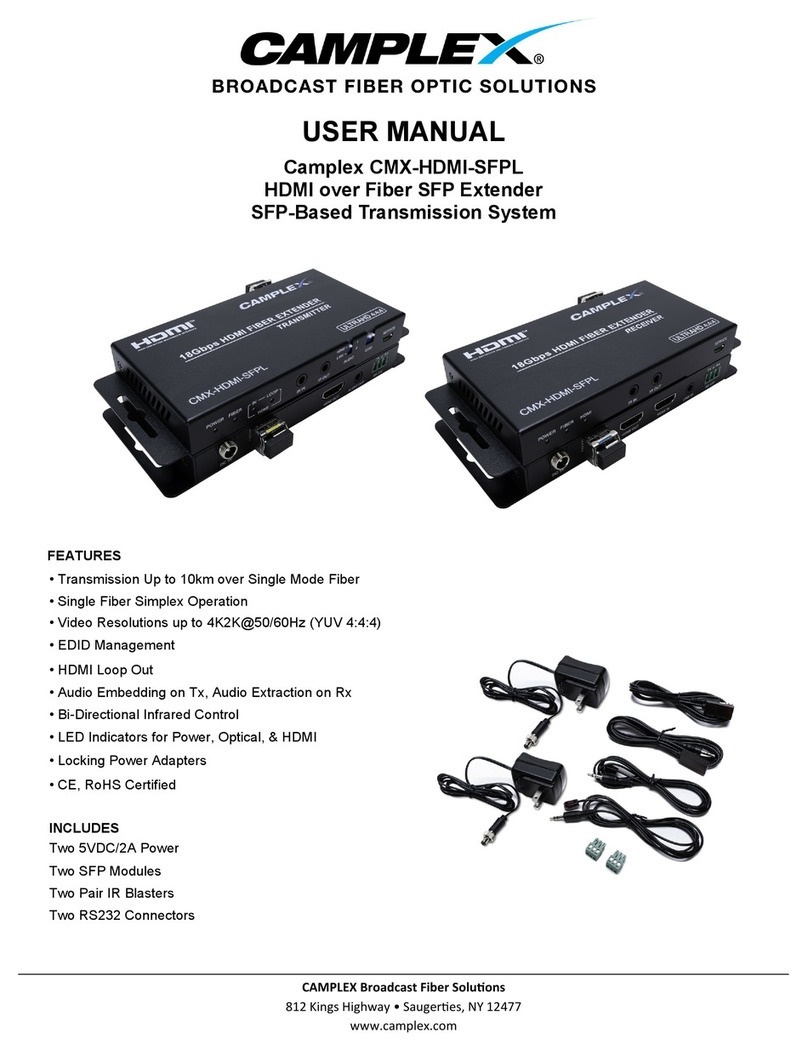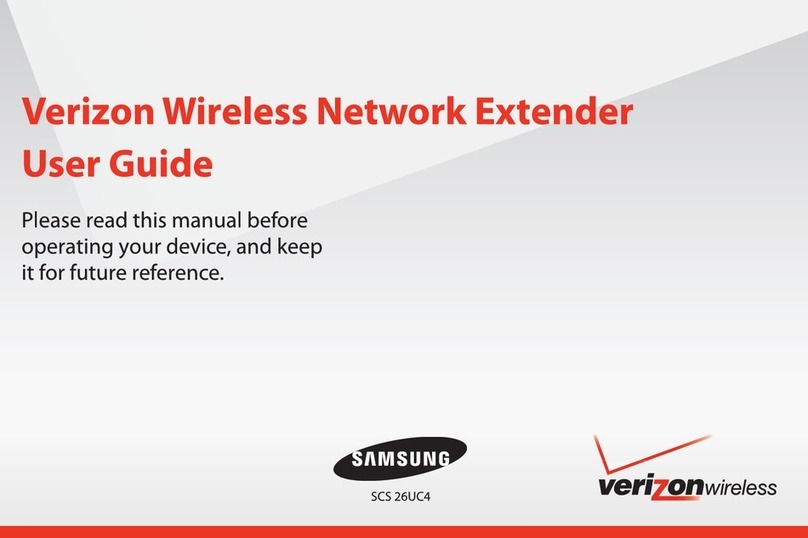* means extended temperature
**Typical maximum cable distance. Actual distance is dependent upon the physical
characteristics of the network.
The chassis version of the Device is C4TEF10xx-10x. For more information, see the
user’s guide on-line at:
www.transition.com click on
Products/Product Finder.
Installation . . . . . . . . . . . . . . . . . . . . .2
Operation . . . . . . . . . . . . . . . . . . . .10
Cable Specifications . . . . . . . . . . . . .12
Technical Specifications . . . . . . . . . .15
Troubleshooting . . . . . . . . . . . . . . .16
Contact Us . . . . . . . . . . . . . . . . . . .19
Compliance Information . . . . . . . . .20
User’s Guide
S4TEF10xx-10x
Stand-Alone Device
• RS-232 to Fiber
• (4) T1/E1 to Fiber
• Extended Temperature Models
The S4TEF10xx-10x Device can extend signals
from an RS-232 data port and up to four (4)
T1/E1 network ports over fiber. The RS-232 and
T1/E1 interfaces are independent of each other and the signals from these ports can be
sent over the fiber interface simultaneously.
The S4TEF10xx-10x is designed to be installed in pairs. For example, install one
S4TEF1011-100/105 as the local Device and another S4TEF1011-100/105 as the remote
Device.
All S4TEF10xx-10x models have the following copper connectors:
The various fiber connectors are available on separate models. Both duplex and single
mode fiber optic Devices are available:
Trademark Notice
All trademarks and registered trademarks are the property of their respective owners.
Copyright Restrictions
© 2010 Transition Networks.
All rights reserved. No part of this work may be reproduced or used in any form or by any means
(graphic, electronic, mechanical) without written permission from Transition Networks.
Printed in the U.S.A.
Part Number Duplex Fiber-Optic - 100Base-FX
S4TEF1011-100/105* ST, 1300 nm multimode, 2 km (1.2 miles)**
S4TEF1013-100/105* SC, 1300 nm multimode, 2 km (1.2 miles)**
S4TEF1014-100/105* SC, 1310 nm single mode, 20 km (12.4 miles)**
S4TEF1015-100/105* SC, 1310 nm single mode, 40 km (24.8 miles)**
S4TEF1016-100/105* SC, 1310 nm single mode, 60 km (37.2 miles)**
S4TEF1017-100/105* SC, 1550 nm single mode, 80 km (49.7 miles)**
Connector Type Number Description
RS-232 1 6-pin, DIN serial 3.2 m (10 ft.)
T1/E1 4 RJ-48
33307.F
VCCI Class 1 Compliance
This equipment is in the 1st Class category (information equipment to be used in commercial and/or
industrial areas) and conforms to the standards set by the Voluntary Control Council For
Interference by Data Processing Equipment and Electronic Office Machines aimed at preventing
radio interference in commercial and/or industrial areas. When used in a residential area or in an
adjacent area thereto, interference may be caused to radio and TV receivers, etc. Read the
instructions for correct handling.
Compliance Information
FCC Regulations
This equipment has been tested and found to comply with the limits for a Class A digital device,
pursuant to part 15 of the FCC rules. These limits are designed to provide reasonable protection
against harmful interference when the equipment is operated in a commercial environment. This
equipment generates, uses, and can radiate radio frequency energy and, if not installed and used in
accordance with the instruction manual, may cause harmful interference to radio communications.
Operation of this equipment in a residential area is likely to cause harmful interference, in which
case the user will be required to correct the interference at the user's own expense.
Canadian Regulations
This digital apparatus does not exceed the Class A limits for radio noise for digital apparatus set out
on the radio interference regulations of the Canadian Department of Communications.
Le présent appareil numérique n'émet pas de bruits radioélectriques dépassant les limites applicables
aux appareils numériques de la Class A prescrites dans le Règlement sur le brouillage
radioélectrique édicté par le ministère des Communications du Canada.
European Regulations
Warning This is a Class A product. In a domestic environment this product may cause radio
interference in which case the user may be required to take adequate measures.
Achtung! Dieses ist ein Gerät der Funkstörgrenzwertklasse A. In Wohnbereichen können bei
Betrieb dieses Gerätes Rundfunkstörungen auftreten, in diesem Fäll ist der Benutzer für
Gegenmaßnahmen verantwortlich.
Attention! Ceci est un produit de Classe A. Dans un environment domestique, ce produit risque
de créer des interférences radioélectriques, il appartiendra alors à l'utilsateur de prende les measures
spécifiques appropriées.
In accordance with European Union Directive 2002/96/EC of the European Parliament
and of the Council of 27 January 2003, Transition Networks will accept post usage
returns of this product for proper disposal. The contact information for this activity can
be found in the 'Contact Us' portion of this document.
